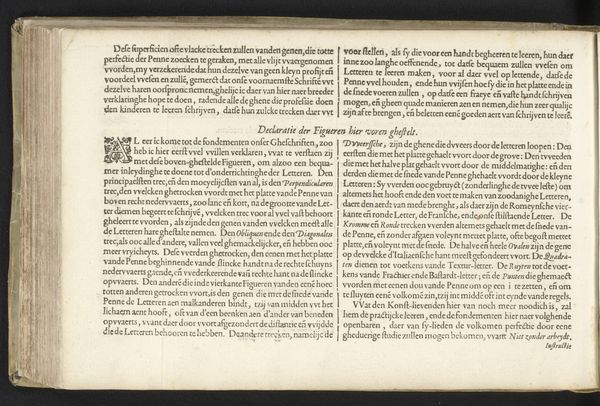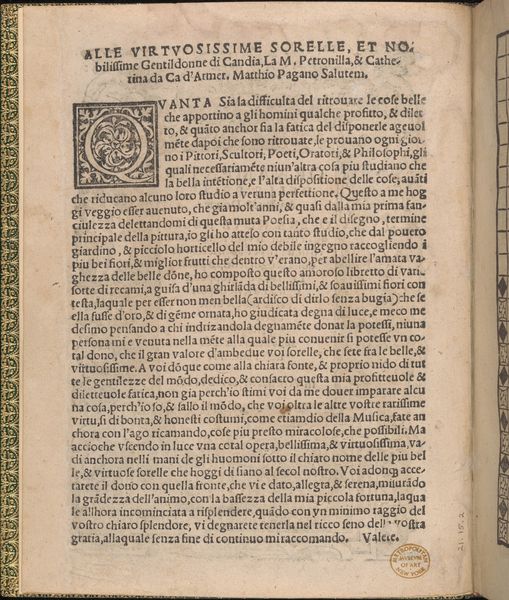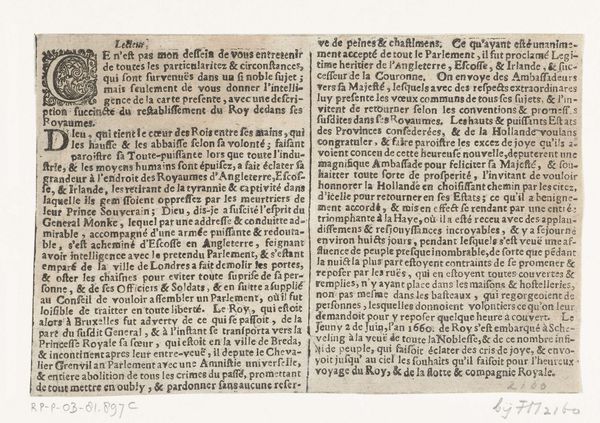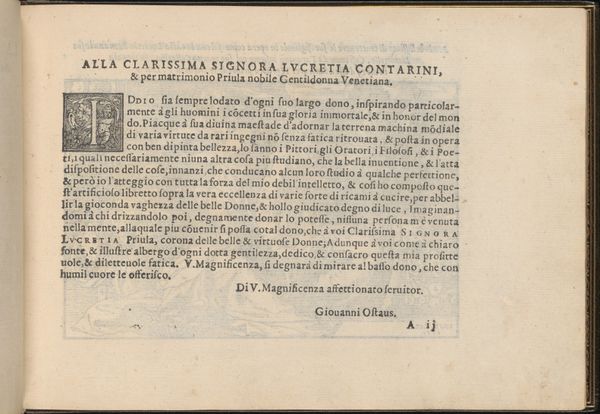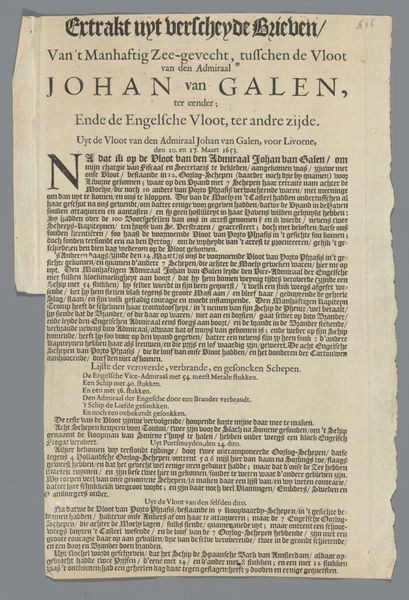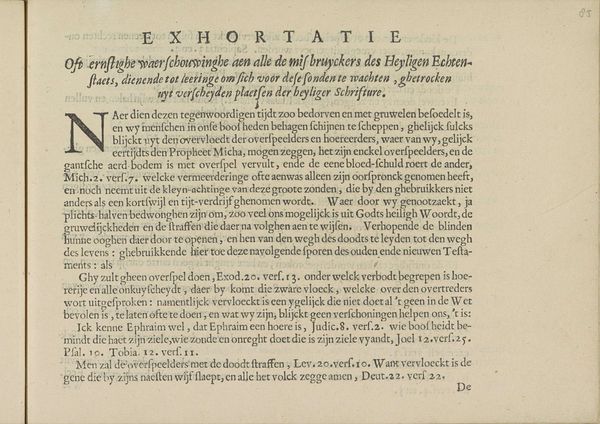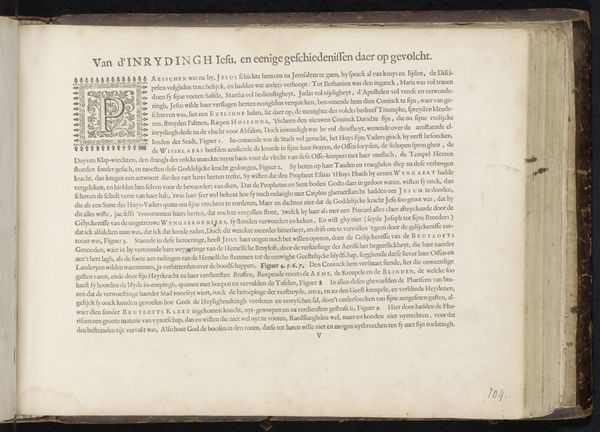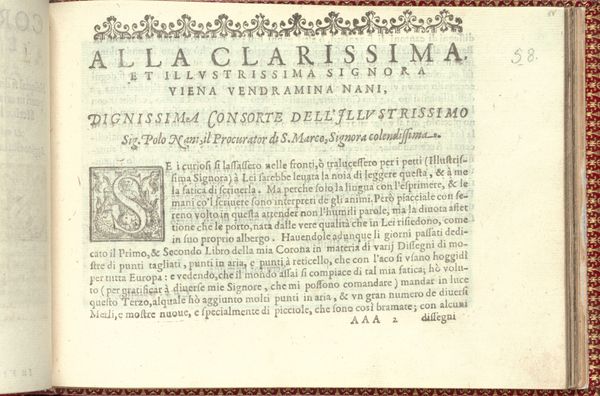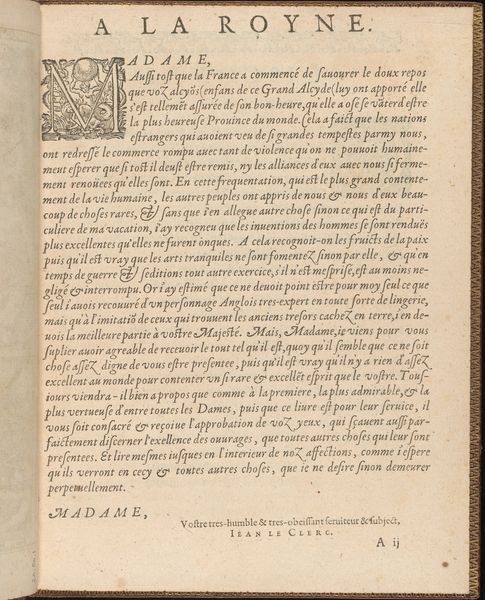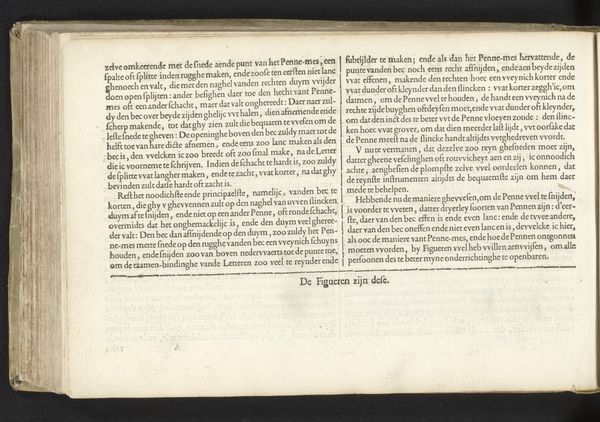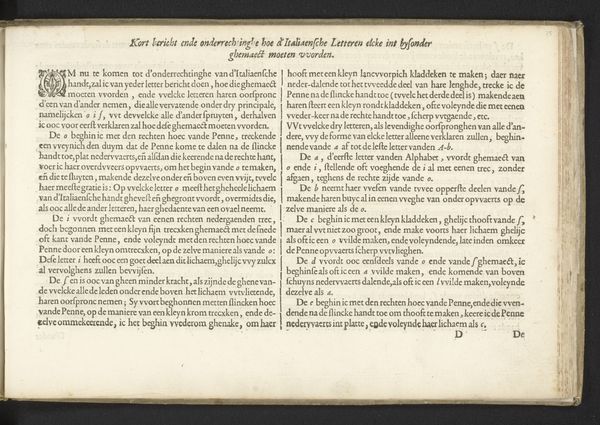
Ghirlanda: Di sei vaghi fiori scielti da piu famosi Giardini d'Italia, page 4 (recto) 1604
0:00
0:00
drawing, graphic-art, print, typography
#
drawing
#
graphic-art
# print
#
11_renaissance
#
typography
#
italian-renaissance
Dimensions: Overall: 5 7/8 x 7 7/8 in. (15 x 20 cm)
Copyright: Public Domain
Curator: Take a look at this open book from 1604, a page from Pietro Paulo Tozzi's "Ghirlanda: Di sei vaghi fiori scielti da piu famosi Giardini d'Italia," housed at The Met. It's a typographical print, showcasing elaborate letterforms. What's your initial reaction? Editor: Immediately, I’m struck by the rigid formality. It’s a world of etiquette laid out in precise, almost severe blackletter. I can practically hear the quill scratching and the pronouncements of social do's and don'ts. There’s something a bit claustrophobic about all that controlled space. Curator: Precisely! The title itself suggests instruction—specifically on composing inscriptions and superscriptions for letters, tailored to different social ranks and conditions. Editor: It feels like a codified system for navigating early 17th-century social hierarchies. I am seeing almost a manual here on who to address with what level of respect. I bet a misstep would be a grave offense. Curator: Absolutely. Think of it as a guide to power dynamics embedded in language. The flourishes and font variations denote status, and even the opening "ENIGNI Lettori, auertirete," urging readers to take note, carries authority. Editor: The level of detail is astounding. To think people dedicated this much time to dissecting something we consider trivial. I imagine letter writing was performative then. Almost like a status-revealing theatrical production in ink. Curator: Very much so. While the typography itself may seem ornate to modern eyes, within its own time it reflects social order and communication as a cultivated, carefully crafted skill. Consider how one wrong move could ruin someone, but you are absolutely right; this almost reads as theatre directions. Editor: Makes me wonder how much authentic connection was possible amidst such a structured system of performance and instruction. Did heartfelt expression survive within these gilded cages of language? It feels so restricted. Curator: Perhaps some artists embraced and pushed those very limitations. Maybe real emotion found its voice in playing those rules to their utmost extent. A certain irony lies there; the guide intended for stiff formality possibly spurred hidden expression in skillful deployment. Editor: Well, after contemplating this, it strikes me—maybe breaking these strict boundaries, even subtly, became a subversive act itself! Thanks to our chat, I understand why even formal restrictions on art may give rise to newer modes of art.
Comments
No comments
Be the first to comment and join the conversation on the ultimate creative platform.

